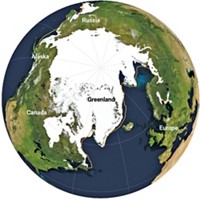Advertisement
Grab your lab coat. Let's get started
Welcome!
Welcome!
Create an account below to get 6 C&EN articles per month, receive newsletters and more - all free.
It seems this is your first time logging in online. Please enter the following information to continue.
As an ACS member you automatically get access to this site. All we need is few more details to create your reading experience.
Not you? Sign in with a different account.
Not you? Sign in with a different account.
ERROR 1
ERROR 1
ERROR 2
ERROR 2
ERROR 2
ERROR 2
ERROR 2
Password and Confirm password must match.
If you have an ACS member number, please enter it here so we can link this account to your membership. (optional)
ERROR 2
ACS values your privacy. By submitting your information, you are gaining access to C&EN and subscribing to our weekly newsletter. We use the information you provide to make your reading experience better, and we will never sell your data to third party members.
Physical Chemistry
New Data On Old Climates
Antarctic ice core provides temperature record dating back 800,000 years
by Stephen K. Ritter
July 9, 2007
| A version of this story appeared in
Volume 85, Issue 28

ANALYSIS of ice retrieved from more than 3,000 meters below the frigid surface of Antarctica is providing a clearer picture of vacillating temperature cycles at the South Pole during the past 800,000 years, according to a report in the journal Science (DOI: 10.1126/science.1141038).
Data from the Dome C ice core reveal that average temperatures during eight glacial ice ages and the periods between them ranged from 10 ??C cooler than the present, reached about 20,000 years ago, to 4.5 ??C warmer than the present, reached about 130,000 years ago. The results are helping confirm the "tight linkage between climate and the greenhouse gas effect," notes Jean Jouzel of France's Laboratory of Climate & Environmental Sciences, who led the research team.
The Dome C ice core was drilled and is being analyzed by the European Project for Ice Coring in Antarctica (EPICA). Researchers finished drilling the 3,260-meter core in 2004 just before hitting rock, and they have been reporting their findings in a series of journal papers. The latest results provide the first look at data from the final 120 meters of the core, the deepest and oldest section.
Estimates of global temperatures come from analysis of the ice for the isotopic ratio of deuterium to hydrogen. The ratio is higher during warmer periods because more heavy water evaporates from Earth's surface, thereby enriching the deuterium content of snow that subsequently is compressed into ice. The data are corroborated by data from other ice cores and from ocean sediment cores.
"The correlation between temperature in Antarctica and variations in sea level as recorded in marine sediments is remarkable over the entire 800,000-year record," Jouzel notes.
Younger sections of the EPICA Dome C core previously were analyzed for the deuterium-hydrogen ratio and for the content of the greenhouse gases methane, carbon dioxide, and nitrous oxide trapped in air bubbles in the ice. The earlier data reveal that CO2 and CH4 concentrations are higher now than for any period covered by the ice core, suggesting the impact of human activities. Elemental analyses of dust particles in the ice core and greenhouse gas analysis of the oldest core section are under way.




Join the conversation
Contact the reporter
Submit a Letter to the Editor for publication
Engage with us on Twitter